Ever since it was put on public display in Lirey, France in 1355, the Shroud of Turin has inspired passionate debates about its authenticity from religious leaders and scientists alike.
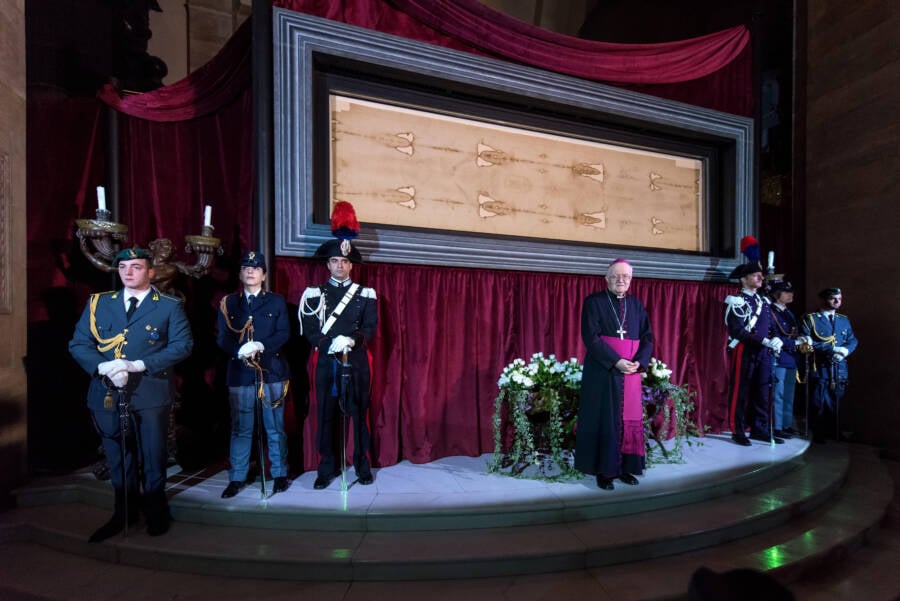
Luciano Movio/Alamy Stock PhotoThe 2015 Exposition of the Shroud of Turin in Italy.
The Shroud of Turin, or the Holy Shroud, is believed by some to be Jesus Christ’s burial garment. The centuries-old linen cloth appears to bear the faint image of a crucified man who endured horrific injuries before his execution — including wounds from a crown of thorns.
Some Christian leaders believe that the Shroud of Turin was truly used to wrap Jesus’ body after his crucifixion. However, science has so far yet to confirm this presumption. Like many holy artifacts, the debate about its authenticity has gone on for centuries, but some recent scientific studies may actually support the Holy Shroud’s authenticity.
However, other recent studies suggest the opposite — that the Shroud of Turin is a fraudulent “relic” created during the Middle Ages. Given that all these researchers are using modern, sophisticated technology, these contrasting claims once again raise the question: Is the Shroud of Turin real?
What Is The Shroud Of Turin?

Wikimedia CommonsA full-length image of the Holy Shroud.
The Shroud of Turin is a linen cloth bearing the faint image of a man who appears to have suffered physical trauma consistent with crucifixion, and it’s traditionally associated with Jesus Christ. Measuring approximately 14 feet, 3 inches long and 3 feet, 7 inches wide, the cloth has been preserved in Turin, Italy since 1578. It’s usually held in the Chapel of the Holy Shroud.
The shroud shows both the front and back of the man, with the two views aligned along the midplane of the body and pointing in opposite directions. The brownish image shows that the man appears to have a beard, mustache, and shoulder-length hair, which could hold clues as to what Jesus really looked like, if it was him. Experts have also estimated that the man stood about 5 feet, 7 inches tall, potentially hinting at Jesus’ height.
Perhaps most notable, the cloth is stained with a dark material that resembles blood, correlating with the numerous wounds in the Biblical description of the crucifixion of Jesus at Golgotha.
The shroud’s documented history dates back to 1355, when it was first publicly displayed in Lirey, France. In 1453, it was acquired by the royal House of Savoy and later moved to Turin in 1578, where it has remained ever since.
In the 20th century, scientific experts began examining the Shroud of Turin, hoping to determine whether it was a real historical relic. But scientific analyses of the shroud have been hotly debated.
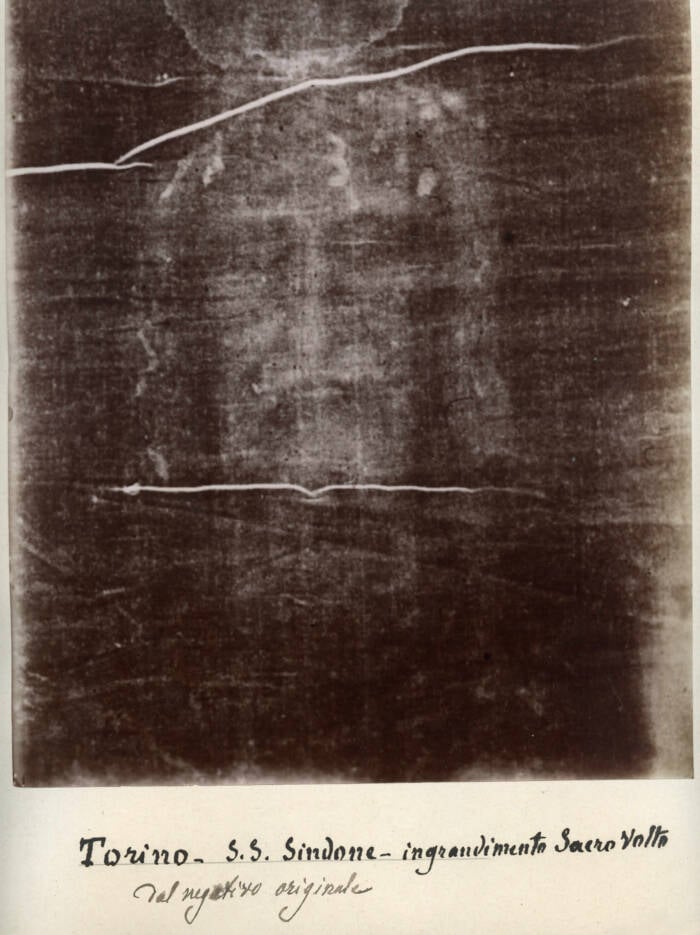
Wikimedia CommonsSecondo Pia’s 1898 negative of the image on the Holy Shroud, a face that eerily resembles Jesus of Nazareth.
In 1988, radiocarbon dating tests dated the shroud to the Middle Ages, between 1260 and 1390 C.E., suggesting it was not old enough to have been used in Jesus’ burial, and perhaps it was nothing more than a medieval forgery. However, some researchers have questioned these results, proposing that factors like contamination or repairs or even the storage of the shroud may have skewed the dating in the tests.
Additionally, forensic analyses have identified substances like creatinine and ferritin on the shroud, which are typically present in victims of severe trauma, supporting the idea that the image could be of a crucified individual.
Though Christian leaders of the past were more likely to express strong opinions about the Shroud of Turin’s authenticity — whether positive or negative — recent popes have approached the subject with far more caution. Often, the cloth is simply regarded as an object of devotion and a powerful symbol of Jesus Christ’s suffering. The shroud is sometimes displayed for public veneration, drawing millions of pilgrims and reigniting ongoing debates among scientists, historians, and theologians.
A Recent Study Seemingly Confirms The Shroud Of Turin’s Authenticity — With A Caveat
In 2022, a study published in Heritage used X-ray analysis to inspect linen from the Shroud of Turin. While these tests couldn’t officially link the shroud to Jesus of Nazareth, they did lead to some fascinating revelations.
“The experimental results are compatible with the hypothesis that the TS [Turin Shroud] is a 2,000-year-old relic, as supposed by Christian tradition,” the authors wrote. Furthermore, they claimed that previous analysis may have been flawed due to factors like contamination, which may have made it seem as if the shroud wasn’t as old as it actually was.
The researchers also found that cellulose within the shroud’s fibers may have aged slowly since the 14th century due to lower room temperatures in Europe. Essentially, that means that most of the cloth’s natural aging — 90 percent — could have hypothetically happened before the Middle Ages.
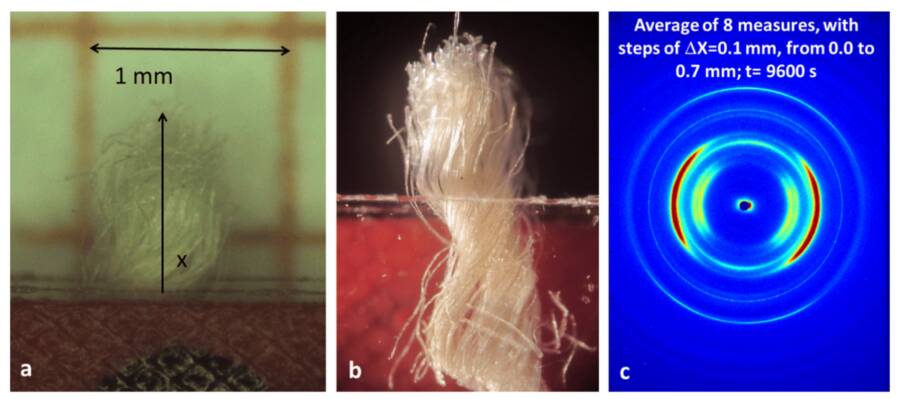
Heritage/De Caro et al.Analysis of the fabric from the Holy Shroud suggests it may indeed be from Biblical times.
However, this date range has a caveat. The shroud could feasibly be 2,000 years old if — and it’s a big if — it was stored at an average temperature of about 68 to 72 degrees Fahrenheit and 75 to 55 percent humidity for 13 centuries before it emerged in the historical record. In order to further explore this hypothesis, researchers said they would need a “more accurate and systematic” analysis of “more samples taken from the TS fabric.”
Still, even if this study couldn’t confirm the shroud’s actual age or officially link it to the time of Jesus Christ, it did argue against some of the previous research that suggested it was a more recent fabric. But shortly after that study, new research emerged that effectively asserted the opposite.
New Research Asserts That The Shroud Of Turin Is “Christian Art”
According to an article in the New York Post from 2024, another examination found that the Shroud of Turin is “unlikely” to be from Biblical times.
Cicero Moraes, a Brazilian graphics expert who spearheaded the study, said, “I think the possibility of this having happened is very remote,” referring to the shroud being used to wrap Jesus’ body after his crucifixion.
“On one side are those who think it is an authentic shroud of Jesus Christ, on the other, those who think it is a forgery,” Moraes stated. “But I am inclined towards another approach: that it is, in fact, a work of Christian art, which managed to convey its intended message very successfully.”
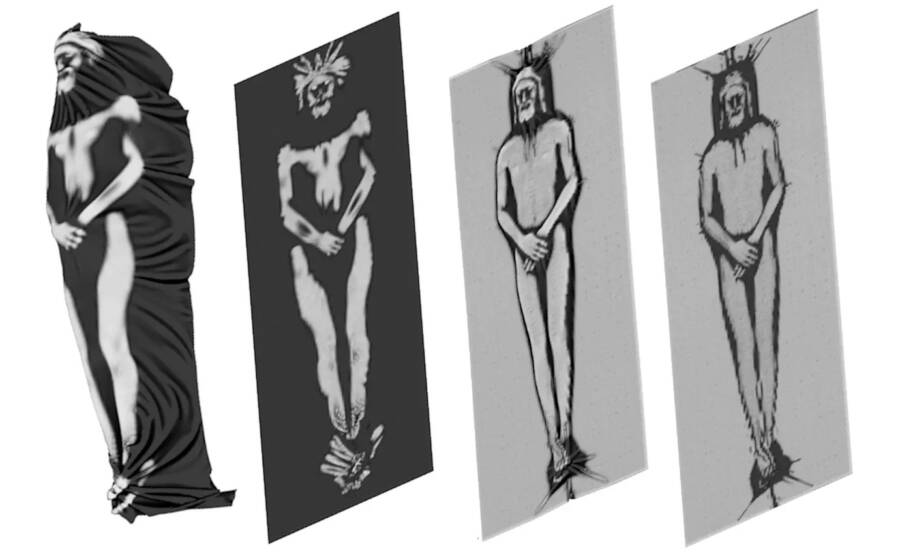
Cicero Moraes/Pen NewsA virtual simulation of the Holy Shroud by Cicero Moraes.
To test his theory, Moraes created a virtual simulation of the shroud being placed over a body. Laying flat, the virtual fabric revealed “a distorted and significantly more robust image” than the one found on the shroud.
“When you wrap a 3D object with a fabric, and that object leaves a pattern like blood stains, these stains generate a more robust and more deformed structure in relation to the source,” Moraes explained.
Imprinted stains from a human body, Moraes said, would appear more swollen than the images that appear on the shroud. Essentially, he thinks the stains on the shroud would make more sense if Jesus was a flat, two-dimensional person — which he wasn’t. Furthermore, many parts of the man’s body were curiously not imprinted, like the torso, groin, or neck area.
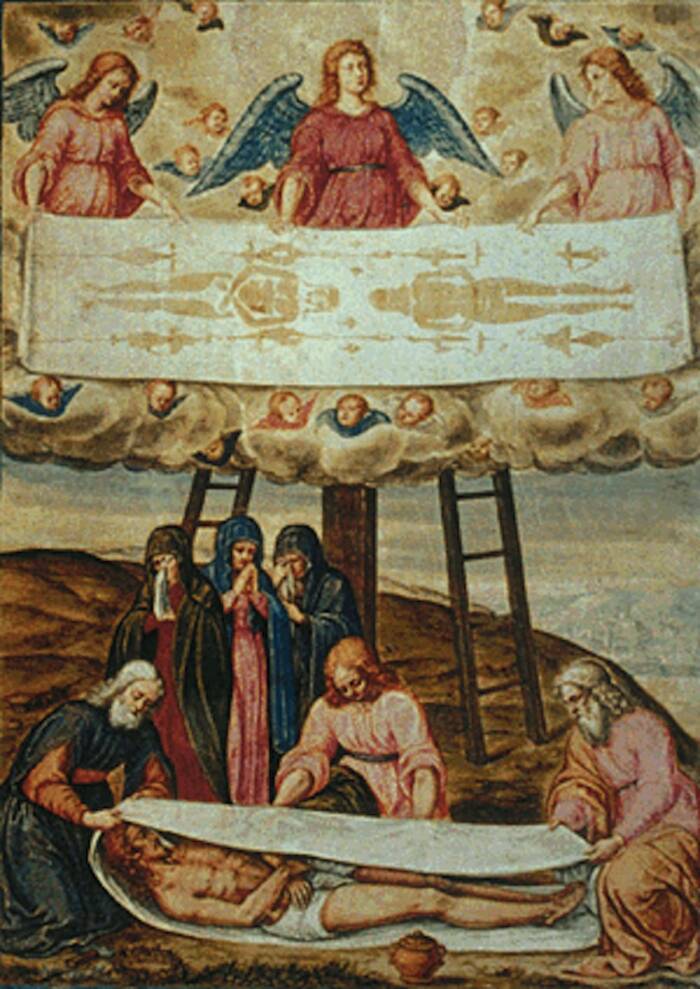
Wikimedia Commons A depiction of Jesus being wrapped up in the Holy Shroud by artist Giulio Clovio.
Moraes said he believes the shroud is a “non-verbal iconographic work that has very successfully served the purpose of the religious message contained within.” But while he thinks it was meant to invoke Jesus’ burial, he doesn’t think that it should be considered a genuine “holy relic.”
Of course, Moraes is just one researcher, and his opinion clearly differs from the opinions of other historians and researchers who have conducted their own analyses on the Shroud of Turin throughout the years.
Ultimately, these new studies do illuminate some of the vaguer aspects of the shroud’s history, but conflicting data leaves the question of the shroud’s authenticity where it has been for about seven centuries — uncertain. And even if it’s someday proven that the shroud dates back to the time of Christ, that still wouldn’t confirm he was the man wrapped in the garment.
After reading about the mysterious Shroud of Turin, learn about where Jesus was born and how old his mother Mary may have been when she gave birth to him. Then, go inside the complicated history of who wrote the Bible.





